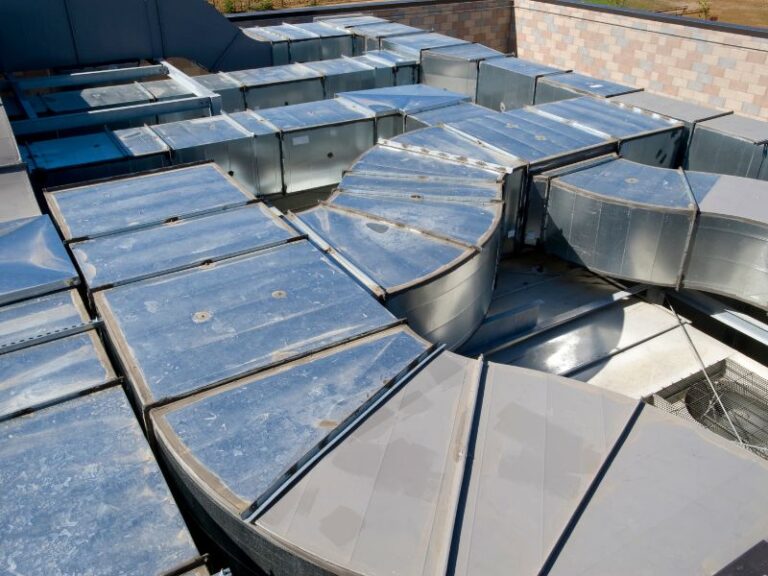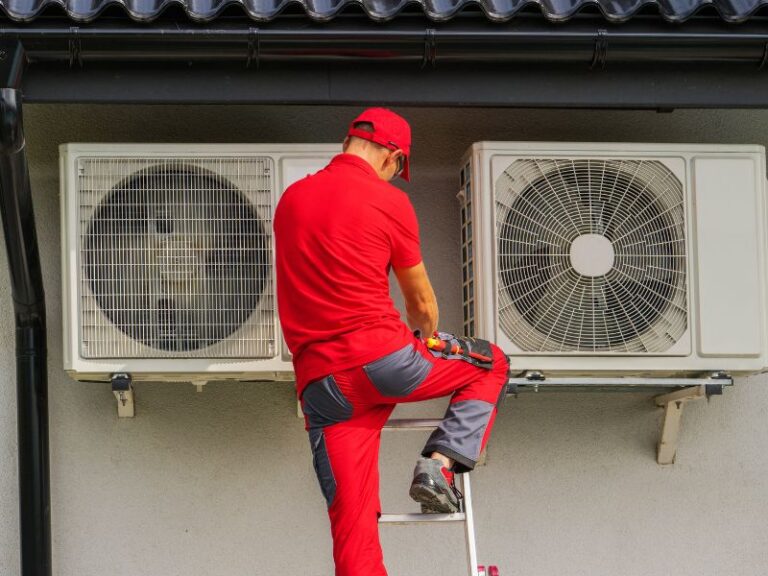When it comes to maintaining a comfortable indoor environment, HVAC (Heating, Ventilation, and Air Conditioning) systems are crucial. These systems regulate the temperature, humidity, and air quality inside buildings, ensuring comfort throughout the year. However, with various types of HVAC systems available, selecting the right one for your home or business can be challenging.
In this article, we will break down the different types of HVAC systems, explain how each one works, and highlight their benefits and best uses. Whether you’re planning to install a new system, upgrade your existing system, or simply want to understand HVAC better, this guide will provide you with the knowledge you need.
What Are HVAC Systems?
HVAC systems are designed to provide heating, ventilation, and air conditioning within a building. They regulate indoor air quality, temperature, and humidity, ensuring a comfortable living or working environment. A well-designed HVAC system improves indoor air quality, energy efficiency, and system performance.
The core functions of an HVAC system include:
- Heating: Using a furnace, heat pump, or boiler to raise the indoor temperature during cold weather.
- Cooling: Using air conditioning units or heat pumps to lower the indoor temperature during hot weather.
- Ventilation: Circulating fresh air through the building to remove stale air, control humidity, and maintain indoor air quality.
Understanding the different types of HVAC systems is key to selecting the one that best suits your space and needs. Let’s explore the various options available.
Types of HVAC Systems
1. Split HVAC System (Central HVAC System)
A split HVAC system is the most common type used in both residential and commercial spaces. It consists of two main units: one placed outside (the outdoor unit) and one inside (the indoor unit). The outdoor unit contains the compressor, condenser, and fan, while the indoor unit houses the evaporator coil, air handler, and blower.
- How It Works: In cooling mode, the system removes heat from the indoor air and releases it outside. In heating mode, the system reverses the process, drawing heat from the outdoor air and transferring it indoors.
- Best Use: Ideal for homes and businesses that require both heating and cooling. Split systems are common for larger buildings with centralized air distribution.
- Key Terminology:
- Compressor: Pressurizes refrigerant gas to either release or absorb heat.
- Condenser: Expels the absorbed heat from the refrigerant into the outside air.
- Evaporator Coil: Absorbs heat from the indoor air to cool it down.
2. Ductless Mini-Split System
A ductless mini-split system operates similarly to a split system but does not require ductwork. It consists of an outdoor unit and one or more indoor units that are mounted on the wall. Each indoor unit can control the temperature of a specific room or zone, providing zoning capabilities for more customized temperature control.
- How It Works: The outdoor unit absorbs or expels heat, and the indoor units distribute the conditioned air throughout the rooms. The system is highly efficient for smaller spaces or individual rooms.
- Best Use: Ductless mini-split systems are perfect for homes or offices where adding ducts is impractical, or for providing individual zone control for greater energy savings and comfort.
- Key Terminology:
- Zoning: Allows you to set different temperatures in various areas of the building.
- Air Handler: The indoor unit responsible for circulating air throughout the room.
- Inverter Technology: Adjusts the speed of the compressor to optimize energy use, providing quieter operation and higher efficiency.
3. Packaged HVAC System
A packaged HVAC system combines all of the heating and cooling components in a single unit, typically located on the roof or the side of a building. Unlike split systems, where the components are separated, the packaged system houses everything within a single box, making it a space-saving option.
- How It Works: The system works in much the same way as a split system, but it is all contained in one unit. The outdoor unit includes the compressor, condenser, and air handler, with the entire system controlled by a thermostat.
- Best Use: Packaged systems are often used in commercial spaces or homes with limited interior space for multiple units.
- Key Terminology:
- Package Unit: The complete HVAC system housed in a single enclosure.
- Roof-Top Unit (RTU): A packaged HVAC system installed on the roof, common for commercial buildings.
4. Geothermal HVAC System (Ground Source Heat Pump)
A geothermal HVAC system uses the earth’s stable temperature to provide both heating and cooling. Ground source heat pumps (GSHP) exchange heat with the earth through a system of underground pipes (called a loop system), taking advantage of the consistent temperature found a few feet below the surface.
- How It Works: In winter, the heat pump extracts heat from the ground and distributes it indoors. In summer, the process reverses, and the heat pump removes heat from the building and transfers it to the ground, cooling the building.
- Best Use: Geothermal systems are highly energy-efficient and ideal for locations with ample land for the underground loop system. They are especially effective in areas with extreme temperatures.
- Key Terminology:
- Ground Source: Refers to the use of the earth’s stable temperature for heating and cooling.
- Loop System: A network of pipes buried underground that circulates a refrigerant or water solution to exchange heat.
5. Hybrid HVAC System
A hybrid HVAC system combines a heat pump with a traditional furnace. The system is designed to use the heat pump for mild weather and switch to the furnace when temperatures are extremely low. This allows the system to operate more efficiently by using the most appropriate heating source depending on the conditions.
- How It Works: The heat pump heats and cools during milder seasons, and the furnace takes over when temperatures drop too low for the heat pump to operate efficiently.
- Best Use: Hybrid systems are ideal for areas with mild to moderate climates, where the heat pump can handle most of the heating and cooling needs, and the furnace only needs to be used during the coldest months.
- Key Terminology:
- Dual-Fuel System: Refers to the combination of a heat pump and furnace for more flexible and energy-efficient operation.
- Furnace: A heating system that generates heat using natural gas, electricity, or oil.
Choosing the Right HVAC System
When choosing the right HVAC system for your building, several factors must be considered:
- Size of the building: Larger buildings may require split or packaged systems, while smaller buildings may benefit from ductless mini-splits.
- Climate: Geothermal systems are ideal for areas with extreme temperatures, while hybrid systems are perfect for moderate climates.
- Energy efficiency: Systems like geothermal or ductless mini-split are highly efficient and can significantly reduce energy consumption over time.
- Budget: Initial installation costs vary depending on the type of HVAC system. Geothermal systems tend to have higher upfront costs, while ductless mini-split systems are more affordable for smaller spaces.
Using tools like CoolCalc can help ensure the HVAC system you select is properly sized for your building, ensuring optimal performance and efficiency.
Conclusion
Understanding the different types of HVAC systems is essential for making informed decisions about heating and cooling your home or business. Each type of system has its own set of benefits, from the energy-efficient geothermal systems to the flexible hybrid systems. By considering your building’s size, climate, and energy efficiency needs, you can select the right HVAC system to ensure comfort and lower energy bills.
With tools like CoolCalc, you can also ensure your HVAC system is accurately sized, improving both efficiency and performance. Whether you’re building a new home or upgrading an existing system, knowing the right system for your needs is the first step toward maximizing comfort and minimizing energy costs.



